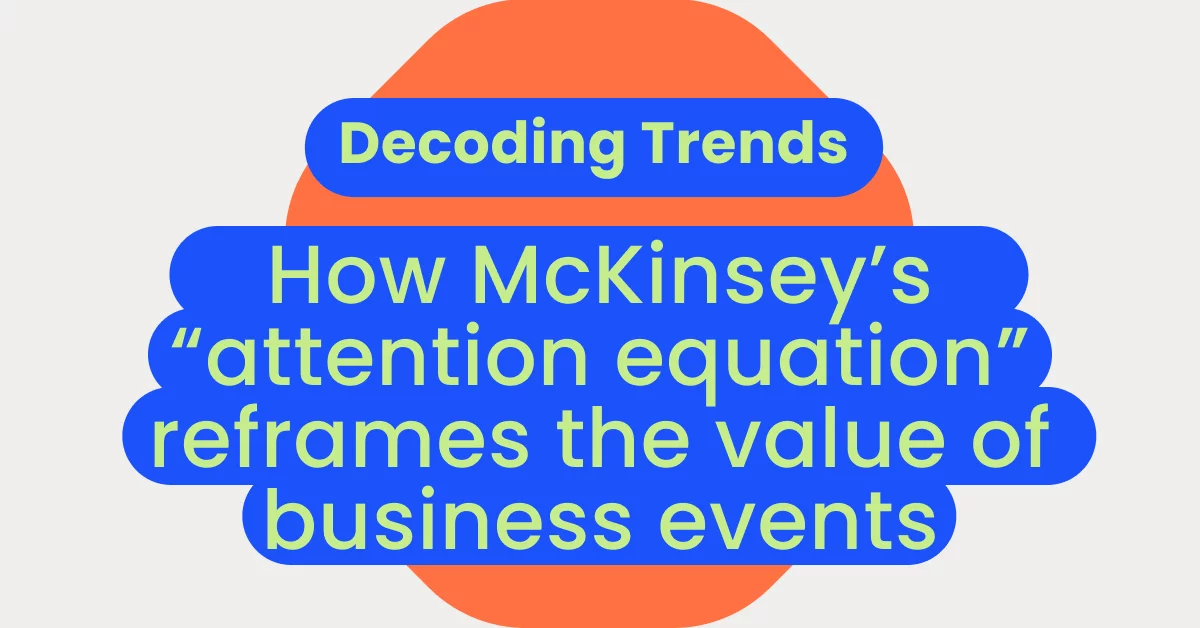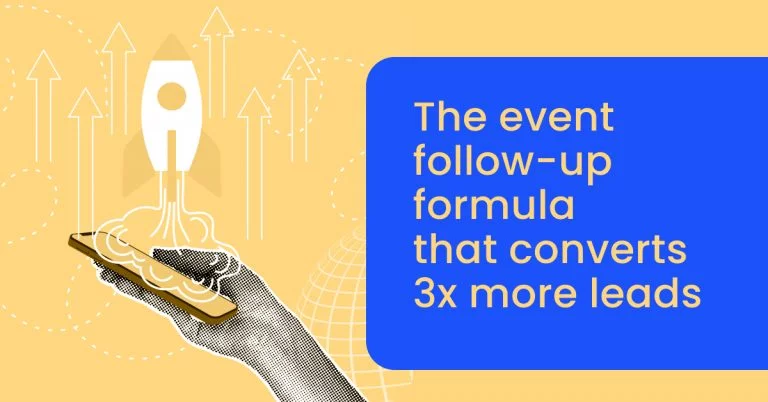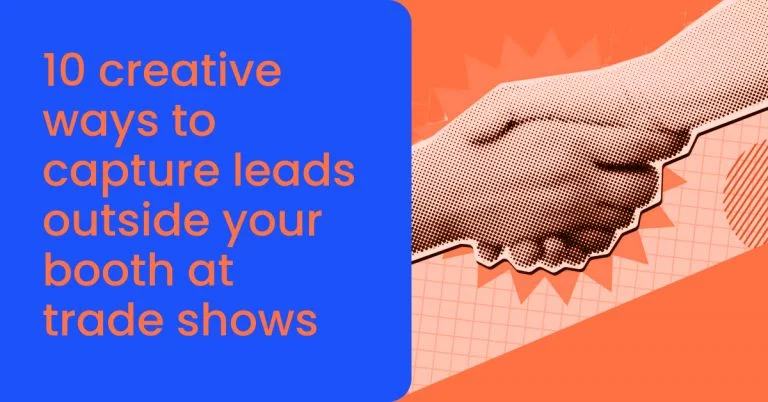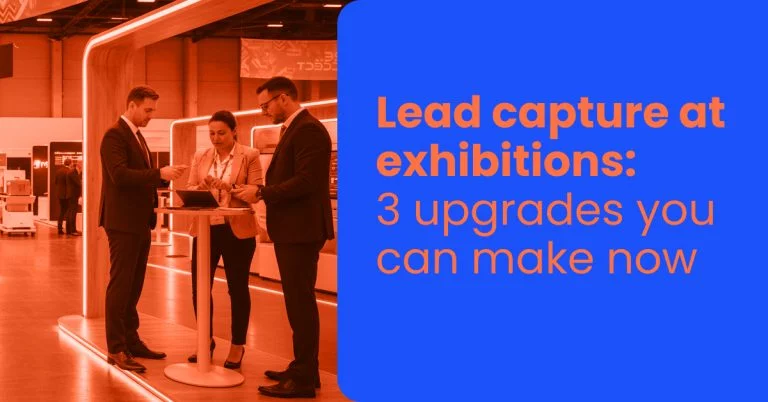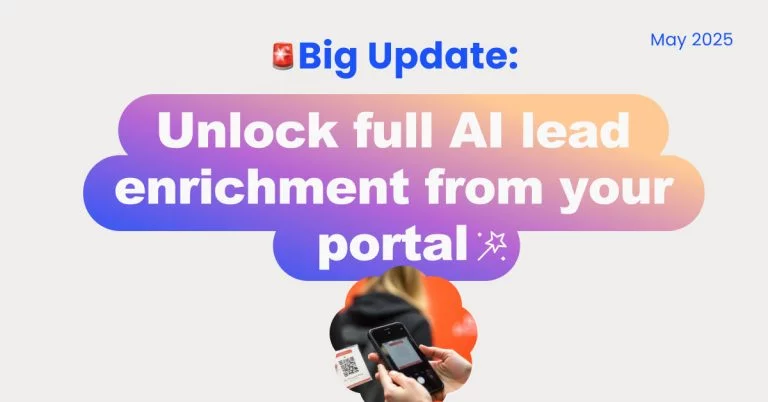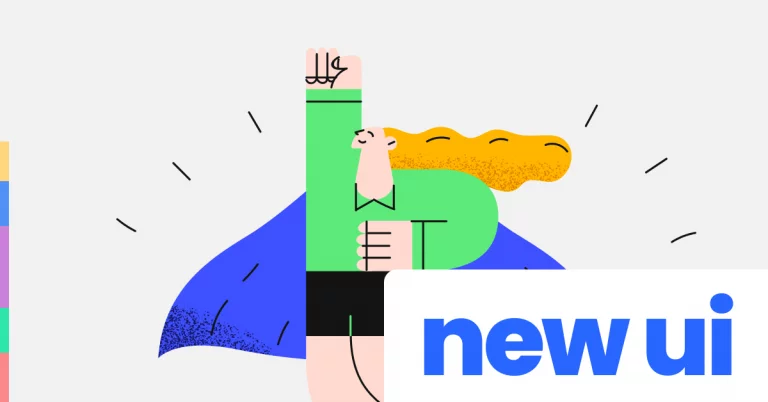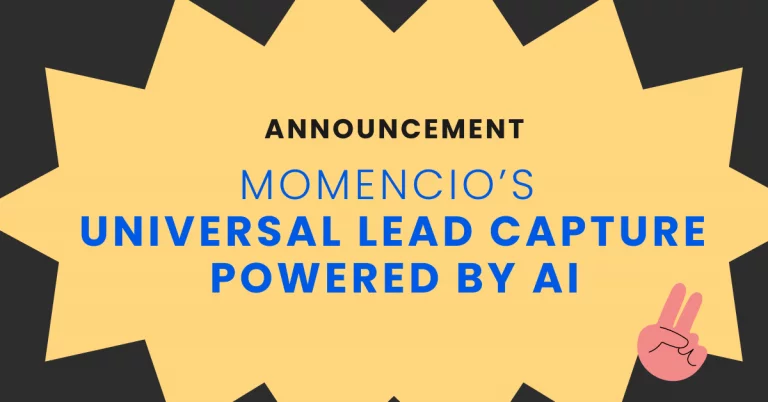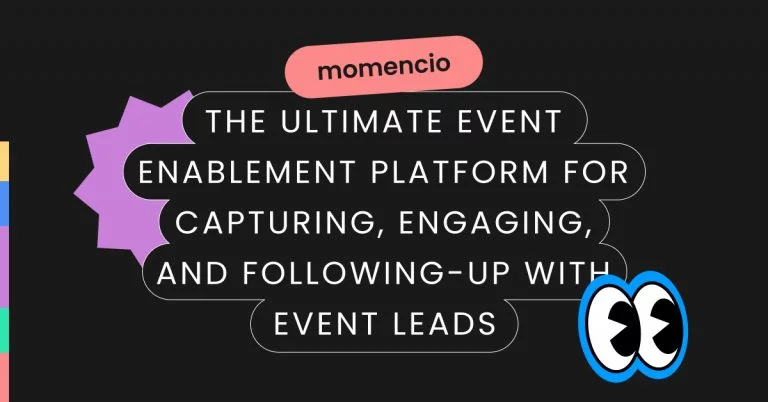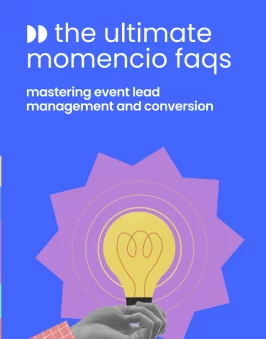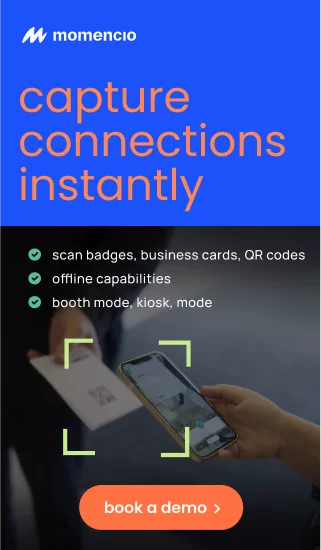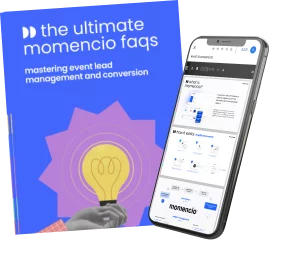The business of attention has changed—and most event marketers haven’t caught up. While digital media has spent years optimizing for clicks, scrolls, and impressions, a new equation is quietly redefining how attention is valued: time × focus × intent. This is the core insight of McKinsey’s recent report, The Attention Equation, which offers a fresh lens on what truly drives ROI across channels.
Surprisingly, the format that delivers the highest quality attention isn’t digital—it’s in-person. Business events, trade shows, and face-to-face engagements command levels of focus and intent that digital platforms can’t replicate. Yet, many organizations continue to undervalue these experiences, treating them as lead collection exercises instead of strategic attention assets.
This article extends McKinsey’s thinking into the event space. It breaks down how field marketers, event professionals, and revenue leaders can operationalize attention as a measurable, monetizable force at every stage of the event lifecycle. We’ll surface hidden insights from the report, reframe event KPIs through the lens of attention economics, and map exactly how tools like momencio can convert high-intent engagement into long-term revenue.
If your business relies on events to influence buying decisions, this is more than a trend report—it’s a strategy blueprint. The next wave of competitive advantage will come from those who understand not just where attention flows, but how to capture and activate it when it matters most.
Setting the stage: Attention has become currency
For years, marketers have optimized for reach. Media plans are built on impressions. Success is reported in page views and CPMs. And yet, somewhere along the way, the actual unit of value—attention—was reduced to a metric of exposure rather than engagement.
McKinsey’s “Attention Equation” reframes the entire conversation. It defines attention not as duration, but as a compound value:
attention = time × focus × intent
This model recognizes that 30 seconds spent in deep consideration is more valuable than five minutes of distracted browsing. And when applied to how buyers consume information, it challenges the foundation of most digital marketing strategies. Suddenly, a booth conversation or a quiet 1-on-1 at an event holds more commercial potential than a thousand paid impressions on a screen.
Yet, the disconnect persists. Digital continues to dominate budget allocations—not because it commands better attention, but because it’s easier to measure. Dashboards track clicks in real time. Funnels are mapped down to the decimal. Attention, on the other hand, is more elusive—especially in physical environments. So it’s often ignored, or worse, assumed.
This is where the opportunity lies for event marketers and business leaders who still believe in the power of in-person interaction. The smartest organizations aren’t just returning to events—they’re rethinking what events are capable of when measured correctly. In this lens, events aren’t logistics exercises. They’re attention arbitrage.
The reality is this: attention is now a scarce, strategic asset. It doesn’t matter how many people attend your event. What matters is how deeply they engage—and what intent they bring into the room. This shift has implications far beyond marketing. It changes how we design booths, run field activations, train reps, structure follow-ups, and report ROI.
As digital noise increases, the premium on high-quality attention will only grow. The brands that recognize this—and operationalize around it—will outperform.

Live business events: The last frontier of intent-rich attention
In a world overrun by passive scrolling, muted autoplay videos, and algorithmically diluted feeds, there’s one environment where undivided attention still thrives: the business event. Conferences, trade shows, summits, and field activations—these are not just brand moments. They are the final strongholds of intentional, high-focus human engagement.
McKinsey’s data validates this. Among all formats analyzed, live, in-person experiences consistently elicit the highest levels of attention quality. That’s not a poetic statement. It’s a quantifiable edge. People at business events are not casually browsing—they’re mentally present, goal-driven, and often in a state of heightened cognitive readiness. In McKinsey’s terms, they exhibit a high “attention quotient”—the alignment of focus with purpose.
And yet, these moments remain underleveraged.
Most event strategies still treat in-person attention like a byproduct instead of the core value. Booths are designed for footfall, not focus. Conversations are measured by volume, not depth. Post-event reports emphasize leads generated, not intent captured. It’s a systemic undervaluation—one that mirrors how early streaming platforms underpriced premium content simply because traditional TV metrics didn’t apply.
The overlooked truth is that attention at events is earned, not purchased. Attendees choose to walk into your booth. They opt into that conversation. They share pain points without being asked. In digital terms, it’s the equivalent of a user clicking on your ad, filling out a form, and starting a demo call—voluntarily, within minutes.
But here’s the key: this attention has a half-life. If not captured, understood, and acted on in real time, it decays quickly. That’s why modern event teams need more than scanners and CRMs. They need infrastructure that’s built for attention intelligence—tools that can record context, measure quality, and trigger next steps while the focus is still fresh.
This is not about nostalgia for face-to-face. It’s about recognizing that business events are the last frontier of intent-rich attention—and unlike most digital channels, this frontier hasn’t been fully mined yet.
Those who understand this won’t just defend their event budgets. They’ll scale them—because they know that in today’s economy, attention isn’t just a cost center. It’s the most undervalued asset in the pipeline.
The hidden metrics of attention at events
Ask most event teams how they measure success, and the answer is predictable: number of leads captured, booth traffic, badge scans, session check-ins. These metrics are easy to track—but dangerously shallow. They tell you who showed up, not who paid attention. And they tell you what happened, not why it mattered.
McKinsey’s attention equation challenges this default mode. It compels marketers to look deeper:
Time × Focus × Intent
Each of these variables can, and should, be tracked in the physical event space. But not with legacy systems. What’s needed is a new layer of operational intelligence—one that recognizes the moments that actually move the pipeline.
Here’s what that could look like in practice:
1. Zone attention index
This isn’t footfall. It’s a weighted index based on dwell time, booth density, and engagement complexity.
- A visitor who stays for 90 seconds and asks two questions scores higher than someone who passes by and grabs a brochure.
- When this is paired with time-of-day and asset interaction data, you start to build a heatmap—not of traffic, but of focus.
2. Job-to-be-done mapping
Why is this person at your booth? Are they evaluating tools? Researching competitors? Benchmarking for next year’s budget?
- This intent layer isn’t guesswork. With the right smart capture tools (like speech-to-text paired with AI note tagging), this context can be recorded in seconds.
- Once mapped, follow-ups stop being generic. They become precise, timely, and aligned to the buyer’s actual objective.
3. Engagement quality score
Not all conversations are created equal. This score blends contextual signals:
- Did the rep take notes?
- Was a microsite triggered in real-time?
- Did the visitor engage with multiple assets?
- Was next-step interest captured live?
These signals don’t just improve sales readiness—they form the backbone of attention valuation.
The problem isn’t that attention at events is hard to measure. It’s that most platforms aren’t built to measure the right things. The industry has defaulted to volume metrics because that’s what gets reported. But attention doesn’t work on volume. It compounds on quality.
What McKinsey study shows—and what most event professionals intuitively feel—is that real ROI is driven by moments of high intent and deep focus. And if those moments aren’t surfaced, scored, and acted on, they disappear into the event noise.
The hidden metrics are already there. The question is whether your event tech is intelligent enough to surface them—and whether your strategy is bold enough to make them your new benchmarks.
The strategic implications for senior leaders
It’s easy to dismiss attention as a marketing term. But McKinsey’s equation makes one thing clear: attention isn’t just a creative problem. It’s an economic lever. And for senior leaders, that changes everything.
In an environment where customer acquisition costs keep rising and digital conversion rates keep falling, the ability to capture and activate high-quality attention becomes a structural advantage. It’s no longer just a campaign performance metric. It’s a boardroom issue.
Let’s break this down in terms that matter to growth leaders.
Events are attention arbitrage engines
The common narrative is that digital scales, events don’t. But McKinsey’s findings challenge this. If attention is more valuable when it’s focused and intent-driven, then events deliver a kind of value that digital rarely does—and at a lower noise ratio.
- A focused 15-minute conversation at a booth can compress months of sales cycle into a single touchpoint.
- A tailored breakout session can elevate brand trust faster than a quarter’s worth of paid ads.
When modeled correctly, the cost per attention-minute at events is cheaper than in digital—and more potent.
Sales needs to be re-enabled for an attention economy
Events are not just about visibility. They’re about velocity. But only if sales teams are trained to recognize and convert high-intent moments.
- The traditional “handover after the event” model is broken. Focus decays fast.
- Field teams must be equipped with systems like momencio that trigger follow-ups based on real-time attention signals, not just contact data.
Reps need to stop chasing scanned badges and start nurturing engaged focus. This is how pipeline gets shorter, and deals close faster.
Your revenue model is only as good as your attention model
If you’re still measuring event ROI with lead quantity, you’re mispricing your best channel. The modern leader needs to ask:
- How many strategic conversations did we have?
- How many led to next steps?
- How many showed clear buying intent?
- How many minutes of focused attention did we generate per attendee?
These aren’t soft metrics. They’re revenue signals—if you’re paying attention to them.
Events used to be seen as branding plays. But today, they’re where market-shaping conversations happen. Where competitor head-to-heads unfold. Where decisions are accelerated. The leaders who recognize this are already shifting their GTM budgets—not away from digital, but toward a better blend that values attention where it’s strongest.
The question isn’t whether your next event generates leads. The question is whether your team is prepared to extract, interpret, and activate the most undervalued growth asset in your funnel: live, strategic attention.
Operationalizing attention with event intelligence
If attention is now the most valuable currency in marketing, then event teams need a system built for trading in it. That system isn’t your CRM. It’s not badge scans or NPS surveys. It’s a purpose-built attention stack—intelligent, real-time, and integrated with revenue workflows.
McKinsey’s equation gave us the model. But in the field, models need muscle. Attention only drives value when it’s captured, qualified, and routed fast enough to matter. This is where traditional event ops fall apart. Most systems capture static data: name, title, booth visit. But they miss the contextual signals—the indicators of cognitive focus and commercial intent—that truly determine ROI.
Event intelligence changes that.
1. Capture attention, not just attendance
Legacy workflows record who showed up. Intelligent workflows record why they showed up and what happened next.
- Instead of just scanning a badge, reps should tag conversation type: solution deep-dive, competitive comparison, project-specific request.
- With tools like momencio’s AI-driven EdgeCapture, reps can voice-record insights, auto-convert to smart notes, and enrich every interaction with contextual metadata.
- Each high-focus moment becomes a signal—trackable, sortable, and immediately actionable.
2. Score for intensity, not just quantity
If all leads are treated equally, attention is wasted. High-intent, strategic engagements need to be surfaced fast.
- Use engagement quality scores based on dwell time, asset interaction, and rep-tagged notes.
- Leads who engage with content microsites within 2 hours of the event should trigger a sales follow-up sequence.
- Passive traffic should be nurtured separately—awareness doesn’t need the same playbook as intent.
3. Align follow-up with the job-to-be-done
Follow-up emails still default to “thanks for visiting us.” That’s not enough. If someone asked about integrations or ROI benchmarks, the next email should lead with that content—automatically.
- With platforms like momencio, reps can trigger personalized microsites mid-conversation—matched to the exact problem the lead shared.
- As the lead explores that content post-event, sales teams receive behavior-based nudges, allowing them to follow up at peak relevance.
This isn’t just automation. It’s a form of attention compounding—ensuring the energy captured in one moment is carried forward into the next.
4. Sync insight with revenue motion
The final piece is integration. Attention insights must flow into systems that drive business outcomes—CRMs, ABM platforms, sales engagement tools.
- Reps shouldn’t have to retype notes or summarize interactions. Event intelligence platforms should automatically sync qualified signals into contact records.
- Sales managers should be able to filter post-event leads by attention tier—not just job title or company size.
- Marketing teams should analyze cost-per-attention-minute across formats to reallocate budget strategically.
Operationalizing attention means treating every high-focus interaction like a compounding asset. Not every event interaction will yield pipeline—but every high-attention one should trigger action.
When you build your GTM workflow around this principle, you stop treating events like awareness plays. You start treating them like precision growth instruments—powered by the most human metric we have: focused, intentional, high-value attention.
How momencio turns live engagement into measurable impact
Attention isn’t valuable because it’s rare. It’s valuable because it’s decisive. And at in-person events, those decisive moments happen constantly—across booths, breakouts, lounges, and quiet hallway conversations. But most teams still fail to capture their full value. Not because they weren’t paying attention, but because they lacked the system to convert that attention into insight, action, and ultimately, revenue.
momencio was built to solve this problem. It’s not just event tech—it’s an execution layer for attention intelligence. Every feature is designed around a single premise: if someone gave you their time and focus, your system should be smart enough to make the most of it.
Time: Capturing the moment while it’s still active
With momencio, reps don’t need to wait until after the event to input notes or chase follow-ups with generic emails.
- The platform enables reps to instantly capture leads, enrich missing data with AI EdgeCaptureTM, log notes with speech-to-text, tag lead context, and build and share personalized microsites instantly for leads, right from the booth.
- It records and assess every activity from the lead—email opened, time spent, assets viewed, content scrolled, downloaded, and demo triggers—not as an afterthought, but as a live event layer.
- Attention is timestamped, not assumed, making post-event analysis significantly more actionable.
Focus: Identifying who’s truly engaged
Attention quality is often missed because surface-level metrics don’t show cognitive engagement. momencio solves this through:
- Reps can build and send personalized landing pages to a lead mid-conversation, matching exactly what was discussed.
- As the lead interacts with that microsite, whether immediately or days later, their behavior is tracked. Not clicks. Their intent gets captured tangibly.
- This interaction and intent from lead becomes the basis for priority scoring, so sales doesn’t waste time chasing cold leads.
Intent: Surfacing signals that convert
The “why” behind an attendee’s interest is the hardest part to capture—and the most valuable. momencio tags and enriches every lead with context:
- Was this lead comparing solutions?
- Did they ask about integrations or pricing?
- Were they evaluating for a current project or just researching?
This data flows directly into your CRM, providing your revenue teams with contextual readiness signals, not just MQLs.
Intelligence loop: From attention to attribution
Most platforms stop at capture. momencio closes the loop:
- Sales teams get real-time nudges when leads re-engage post-event—on a whitepaper, demo video, or ROI calculator.
- Marketing sees which content assets drive continued attention—and which conversations convert.
- Leaders get a full-funnel view: from high-attention moment to pipeline creation, nurturing, and revenue impact.
In short, momencio operationalizes the McKinsey attention model inside your event workflow. It transforms real-world focus into sales intelligence. It doesn’t just help you capture attention—it makes sure that attention doesn’t go to waste.
For companies betting big on in-person events, this isn’t a nice-to-have. It’s the operating system for modern event ROI.
Time to rethink event metrics
Every year, brands spend millions exhibiting at trade shows, sponsoring summits, and running roadshows. And every year, the same reports come back: number of leads scanned, booth traffic, sessions attended, maybe a handful of anecdotes from the sales team. The metrics haven’t evolved—despite the fact that the buyer journey has, the decision cycles have, and most critically, attention itself has changed.
McKinsey’s attention equation didn’t just give us a better model—it issued a wake-up call. If attention is the real driver of commercial impact, then events need a new operating system. One that recognizes strategic attention moments as the true currency of pipeline.
The current model—track volume, optimize follow-up, pass to sales—is insufficient. It treats all interactions as equal and all leads as linear. But attention isn’t linear. It spikes. It fluctuates. It compresses time when captured right, and evaporates when ignored.
It’s time we stopped measuring event ROI in terms of what’s easy to track, and started measuring it by what actually drives revenue:
- How much focused attention did we earn?
- How many strategic conversations did we have?
- How much of that attention was aligned to a current business problem?
- How much of it was converted into action—on the floor, and in the days that followed?
That’s the real event performance dashboard. And it’s only visible to teams who are willing to rewire how they think about value.
Platforms like momencio don’t just help teams follow up. They help teams see—to see attention as a signal, not a side effect. To act in the moment, not weeks later. And to close the loop between presence and pipeline.
The brands that win the next era of business growth won’t be the ones spending the most. They’ll be the ones who can identify, capture, and activate attention when it matters most. And for now, there’s no better place to do that than in the room, face to face.
Bonus read: Event attention vs digital attention: a comparative value map
| Dimension | In-person events | Digital formats |
| Focus intensity | Very high — attendees are present, undistracted, intent-driven (McKinsey & Company, LinkedIn) | Moderate to low — multitasking is common; divided focus |
| Intent alignment | Clear job-to-be-done—networking, buying, problem-solving | Varies widely; often passive or ambient intent |
| Attention quality | Very high — deep engagement, conversational, high stakes | Generally lower; video and ads get partial attention |
| Measurement sophistication | Traditionally weak, but newer platforms aim for real-time attention metrics | Evolving fast—viewability, attention minutes, facial/interaction tracking |
| Time efficiency | 10–30 focused minutes can compress long digital nurture cycles | Digital is broader but often shallow and prolonged |
| Monetizability | High—attention tied to pipeline acceleration & purchase intent | Digital attention monetization still lagging; viewability ≠ conversion |
| Cost per attention-unit | Lower—higher ROI per attention unit when measured correctly | Harder to calculate; CPM may hide low attention yield |
Key takeaways
- Focus is stronger live
McKinsey data shows that live experiences (including events) consistently deliver the highest attention quotient—a blend of focused and intentional engagement.
- Digital attention is growing, but less potent
Digital formats are measured increasingly for attention—via viewable time, completion, interaction—but they still fall short of the depth captured live.
- Attention monetization favors live
Despite thin measurement tools, real-time, high-intent attention generated in-person correlates stronger with pipeline and deal acceleration.
- Digital can complement, not replace
Digital excels at scale and reach, but it should serve to amplify and re-engage focused audience segments initially captured through high-attention live moments.
What you can do with this information
- Quantify your own attention units
Track booth dwell time, conversation depth, asset interaction. Calculate cost per focused minute vs generalized digital exposure.
- Integrate intelligent measurement tools
Use platforms (like momencio) that enable real-time capture, scoring, and routing of attention—turning those high-intent minutes into pipeline signals.
- Rebalance your event strategy
Treat events not as one-off experiences, but as high-value attention catalysts—seeding digital programs that follow the moment of peak focus.
